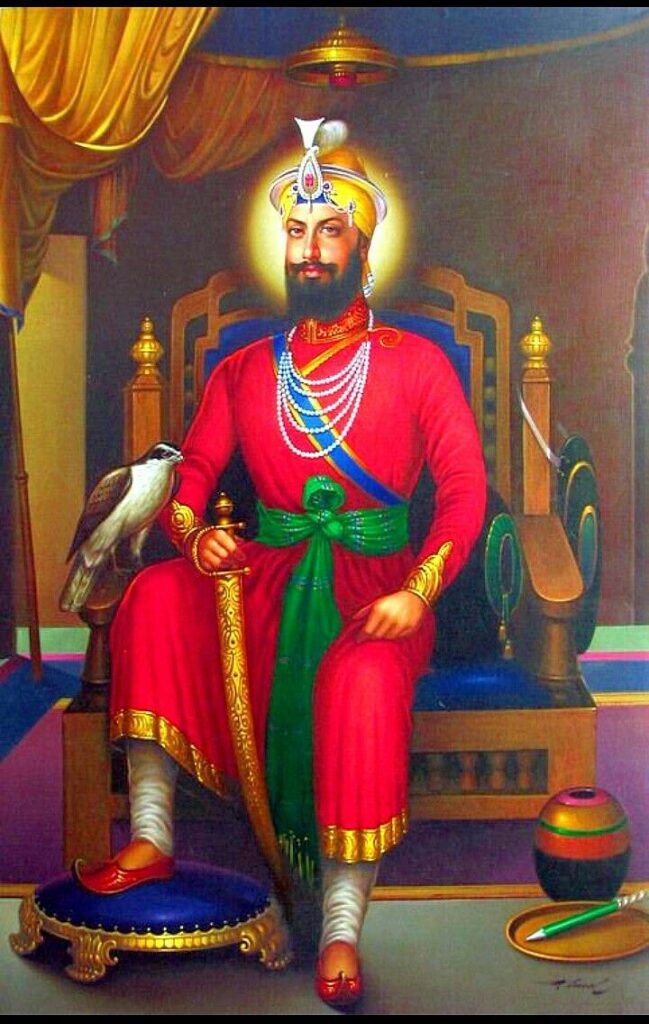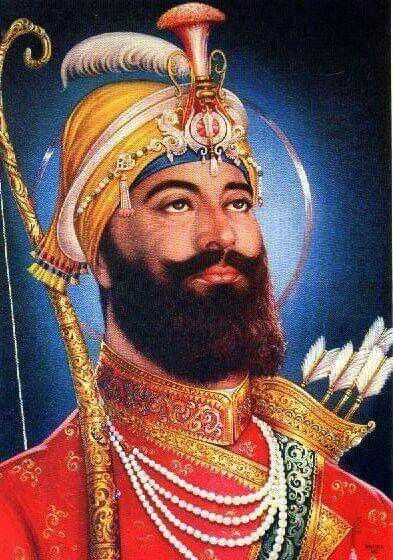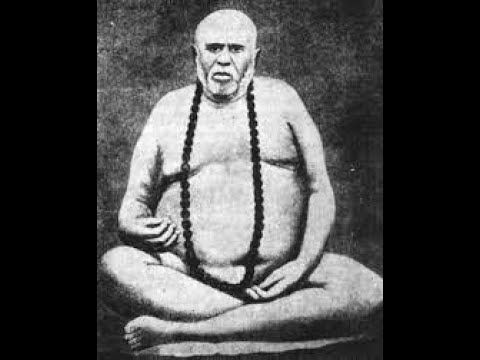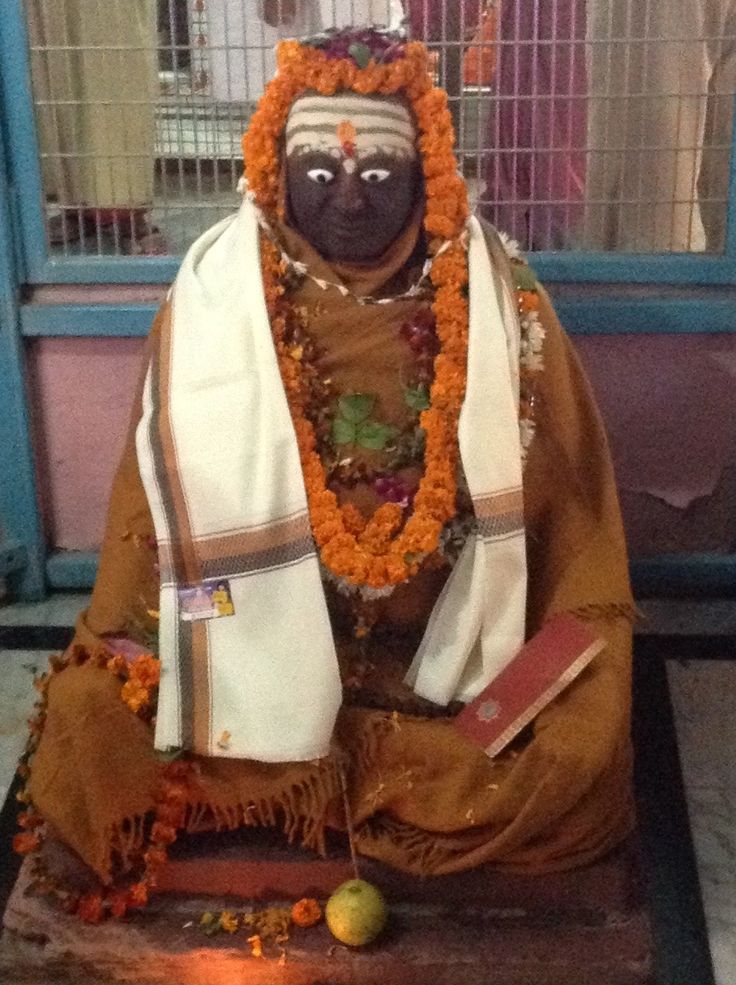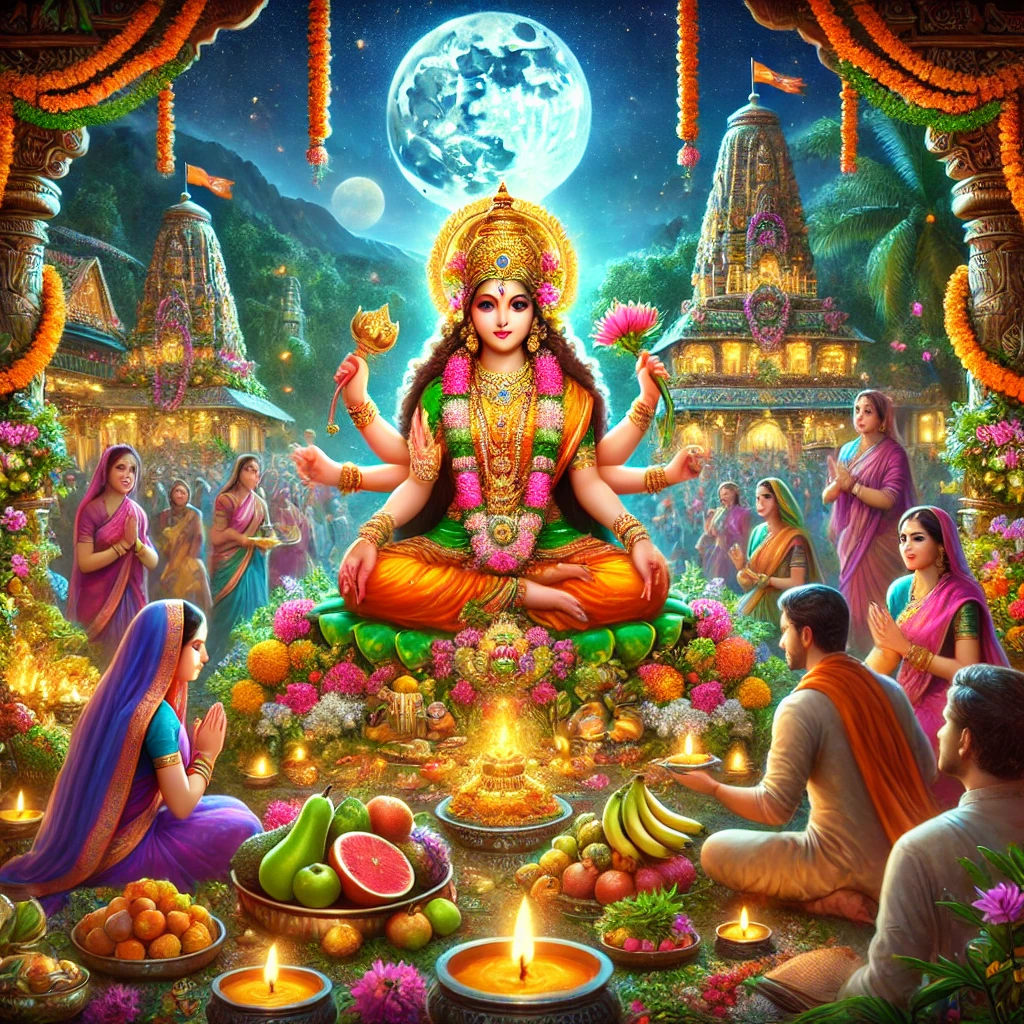Guru Guru Gobind Singh : The Spirit of Sikhism
Introduction
Guru Gobind Singh, the tenth and final human Sikh Guru, is one of the few persons in the annals of history who exemplifies the qualities of tenacity, leadership, and spiritual depth to the same extent as he does. In the year 1666, Guru Gobind Singh was born in Patna Sahib, Bihar, India. He was born during a turbulent period that was characterized by political instability, religious persecution, and social upheaval. His life and legacy are not only essential to Sikhism, but they also serve as a shining example of bravery and everlasting faith in the face of tyranny during his lifetime. In this essay, we go into the life of Guru Gobind Singh, examining his accomplishments, ideologies, and the profound influence he has had on millions of people all over the world.
Early Life and Formation
As Gobind Rai, Guru Gobind Singh was born to Guru Tegh Bahadur, the ninth Sikh Guru, and Mata Gujri. Guru Gobind Singh was not a Sikh. During his formative years, he was subjected to comprehensive spiritual instruction and the ideals of Sikhism, which placed an emphasis on dedication, equality, and fairness. He was proclaimed the Guru at the early age of nine, following the martyrdom of his father, who was murdered by the Mughal emperor Aurangzeb for refusing to convert to Islam. His father was executed for his refusal to convert to Islam. A great sense of responsibility to safeguard his faith and the people who followed him was instilled in the young Gobind Rai as a result of this experience, which was a defining moment.
Although Guru Gobind Singh was still a young man, he was not shielded from the terrible realities that prevailed throughout his period. During the reign of Aurangzeb, the Mughal Empire was infamous for its intolerance of other religions and its persecution of those who were not Muslims. The Sikh community was subjected to unrelenting assaults, which resulted in the loss of lives, property, and the esteemed leaders of the Sikh community. As a result of these circumstances, Guru Gobind Singh was inspired to change Sikhism from a purely spiritual path into a socio-political movement that was committed to protecting righteousness and justice.
Establishment of the Khalsa
It was in the year 1699 that Guru Gobind Singh established the Khalsa, which is considered to be one of his most outstanding contributions. The Sikh religion went from being a personal spiritual path to becoming a collective martial society that was committed to defending those who were oppressed as a result of this foundational event, which marked a turning point in the history of the Sikh religion. Anandpur Sahib was the location where Guru Gobind Singh established the Khalsa by baptizing five willing Sikhs. These individuals were referred to as the Panj Pyare, which literally translates to “Five Beloved Ones.” Symbolizing equality and the rejection of caste distinctions, they were given the surnames Singh (lion) for males and Kaur (princess) for females. Singhs were given the surnames Singh and Kaur respectively.
The establishment of the Khalsa was not only a symbolic act; rather, it included a stringent code of conduct and a vow to defend the principles that are central to Sikhism. Kesh, which is uncut hair, Kangha, which is a wooden comb, Kara, which is a steel bracelet, Kachera, which are cotton underwear, and Kirpan, which is a ceremonial sword, were the Five Ks that members of the Khalsa were obliged to keep under control. It was via these writings that they were constantly reminded of their responsibilities, their identity, and the obligation to defend the vulnerable and fight against injustice.
The formation of the Khalsa by Guru Gobind Singh was a forward-thinking step that strengthened the Sikh community in light of the dangers that came from the outside. Sikhs were able to defend their faith and make a good contribution to society as a result of the development of a feeling of unity, discipline, and purpose that it provided. The Khalsa, which embodies the principles of valor, sacrifice, and dedication, continues to be the foundation of Sikh identity in the modern day.
The Literary and Spiritual Contributions
Not only was Guru Gobind Singh a prominent combat leader, but he was also a renowned poet and philosopher by profession. His works of literature are profound, reflecting profound spiritual ideas and providing guidance for living a moral life while still being practical. A number of his compositions, including “Jaap Sahib,” “Benti Chaupai,” and “Akal Ustat,” are included in the Dasam Granth, which is a scripture that is credited to him. These are among his most noteworthy works.
“Jaap Sahib” is a hymn of praise to the Almighty, highlighting the transcendence and omnipresence of God. It is a hymn that was written in India. Sikhs are able to engage in devotional practices with the assistance of this instrument, which acts as a tool for meditation and spiritual upliftment. The prayer known as “Benti Chaupai” is a supplicatory prayer that seeks supernatural assistance and protection. Its purpose is to emphasize the importance of one’s dependence on God during times of difficulty. In the midst of the transient obstacles that the world presents, “Akal Ustat” extols the eternal nature of the divine and encourages believers to defend principles that will endure forever.
Additionally, ethical conundrums, social fairness, and the significance of moral integrity are also topics that are discussed in Guru Gobind Singh’s writings. In accordance with the larger Sikh philosophy of equality and service, he called for the elimination of social ills like as discrimination based on caste, inequity between the sexes, and exploitation. His intellectual speeches continue to motivate and direct Sikhs, so contributing to the development of a community that is founded on spiritual enlightenment and moral accountability.
Military Prowess and Leadership
Strategic genius and unwavering determination were hallmarks of Guru Gobind Singh’s leadership. He gave the Sikhs the tools they needed to become a powerful army that could protect their faith and way of life. He believed that fighting for moral convictions and the protection of the innocent were just as important as physical conflict.
Battles against the Mughals and their supporters were commonplace throughout Guru Gobind Singh’s life. His strategic brilliance and the bravery of his subjects were on full display in the fights of Bhangani, Nadaun, and Anandpur. When the Sikh Gurus’ rights and safety were repeatedly violated by the Mughals, it often led to these disputes. The Mughals had tried to suppress Sikhism.
Guru Gobind Singh persevered through adversity by balancing spiritual devotion with martial readiness. True fighters, he said, must have compassion and ethics at their core. This dual purpose kept the Khalsa pure, devoted to justice rather than conquest. His leadership style permanently altered Sikh military traditions with its combination of modesty, bravery, and strategic vision.
The Guru’s Final Days and Martyrdom
Later years of Guru Gobind Singh were difficult and sad. After Mughal and hill chieftain armies besieged Anandpur Sahib for protracted times, Guru Gobind Singh and his supporters were constantly attacked. Notwithstanding all the hardships, he kept inspiring and guiding with unflinching commitment.
The last trip the Guru took brought him to Nanded, Maharashtra, where on October 7, 1708 he met martyrdom. He suffered deadly injuries even as he preserved the Sikh scriptures and the last of the human Gurus. Guru Gobind Singh announced before his death that the Guru Granth Sahib, the holy book of Sikhism, will be the perpetual Guru instead of any human Gurus. This statement confirmed the fundamental conviction in the continuous spiritual direction the scriptures offers, therefore guaranteeing unity and continuity among the Sikh people.
Legacy and Impact
Many facets of Sikh life and society at large have been shaped by Guru Gobind Singh’s legacy, which goes beyond religious lines. Sikhs from throughout the globe find inspiration in his teachings on social justice, equality, and communal service. Even now, the Khalsa is a thriving institution that continues to uphold and adapt the values he laid down.
Guru Gobind Singh was a staunch advocate for education for all people, regardless of their gender or socioeconomic background, and for the free flow of information. Before it became commonplace, his progressive views on women’s participation in the Khalsa and their equal status in the community were groundbreaking.
Beyond the Sikh community, his teachings on universal brotherhood and against caste discrimination have promoted tolerance and acceptance. In keeping with Guru Gobind Singh’s lasting dedication to service and compassion, Sikhs participate actively in humanitarian initiatives, catastrophe relief, and community development.
Guru Gobind Singh is the spiritual and cultural ancestor of the Sikhism faith and its dynamic festivals, martial arts, music, and traditions. Festivities like Vaisakhi, which mark the founding of the Khalsa, are celebrated with great zeal and delight, strengthening the ties of community and cultural pride.
Also, leaders and people fighting for equality and justice can draw inspiration from Guru Gobind Singh’s life story. We may learn a lot about the power of faith to effect positive social change and to strengthen communities via his example of how to combine spirituality with activism.
The Guru Granth Sahib: The Eternal Guru
Declaration of the Guru Granth Sahib as the eternal Guru was one of the most significant contributions made by Guru Gobind Singh. Ensuring the preservation and accessibility of the teachings and wisdom of the Sikh Gurus to future generations was a spiritually and pragmatically driven decision. The inclusive and universal aspect of Sikhism is reflected in the Guru Granth Sahib, a collection of hymns and writings by Sikh Gurus and numerous saints from different religious backgrounds.
All Sikhs, regardless of their social rank or location, were able to seek spiritual leadership when Guru Gobind Singh elevated the scripture to the status of the Guru. This choice further demonstrated how scripture and collective wisdom are vital for communal guidance, helping to cultivate a sense of togetherness and one goal.
Philosophical and Theological Contributions
The philosophical terrain of Sikhism was shaped by Guru Gobind Singh’s significant theological contributions. He underlined the idea of “Sant Sipahi” or “Saint-Soldier,” pleading for a harmony between one’s spiritual commitment and their participation in secular matters. Spiritual enlightenment, social justice, and the protection of the vulnerable are all emphasized in this Sikh tenet.
The ideas of “Chardi Kala,” a condition of elevated spirits and unfaltering optimism regardless of circumstances, were also expressed by him. This way of thinking encourages positivism and resilience, which helps people and communities face adversity head-on.
Guru Gobind Singh also emphasized the concept of “Miri-Piri,” or the union of material and spiritual power. To govern with spiritual insight and ethical integrity, to exert authority justly and compassionately—that is the job of leaders, according to this idea.
Educational Reforms and Institutions
Guru Gobind Singh saw the potential of education to change lives, so he set up schools and other programs to help Sikhs improve their knowledge and abilities. Education, he saw, was the key to development on an individual level, advancement in society, and strong communal defense. He paved the way for a balanced and self-reliant Sikh community by urging his followers to learn about both religion and science.
In addition to serving as places of worship for Sikhs, gurdwaras also became hubs of communal life, housing educational programs, vocational schools, and spiritual advisors. These establishments were vital in maintaining Sikh traditions, encouraging intellectual development, and producing Sikh leaders who would carry on Guru Gobind Singh’s work.
Women in the Khalsa
Gender equality was a novel issue for Guru Gobind Singh. He dared to question the prevailing patriarchal standards by granting women membership in the Khalsa. Incorporating women into the Khalsa further demonstrated their inherent value and equality in the society.
Mai Bhago and other notable women were living examples of the fortitude and commitment that Guru Gobind Singh preached. Sikh soldiers were led in battle by Mai Bhago, proving that courage and leadership are gender-neutral. The foundation for women’s full participation in all aspects of Sikh life, from spiritual leadership to social service, was built by this empowering of women.
Global Influence and Diaspora
The Sikh faith now has millions of adherents all over the world. The ideals and teachings of Guru Gobind Singh have had an impact on people all around the world, regardless of where they live. Through community centers, educational institutions, and charitable initiatives, the Sikh diaspora around the world carries on his legacy.
Healthcare, technology, education, and public service are just a few areas where Sikhs make significant contributions in nations like Australia, Canada, the UK, and the US. Fostering cross-cultural understanding and collaboration, Guru Gobind Singh’s principles of equality, service, and resilience resound globally.
The Sikh diaspora has also been instrumental in maintaining and expanding Sikh culture, language, and identity in more diverse and inclusive worlds. By organizing festivals, cultural events, and community activities, they keep Guru Gobind Singh’s teachings alive and well, encouraging future generations to value their history and make a positive impact on the world.
Interfaith Dialogue and Peacebuilding
Sikhism is now a powerful tool for interfaith communication and peacebuilding thanks to Guru Gobind Singh’s teachings on worldwide brotherhood and respect for all religions. In order to promote peace and coexistence, his teachings call for various religious groups to work together in harmony.
Amidst a world sometimes torn apart by cultural and religious differences, the teachings of Guru Gobind Singh provide a path towards harmony and unity. Interfaith activities, conversation, and bridge building are actively pursued by Sikh leaders and communities. Guru Gobind Singh’s lasting dream of a fair and harmonious society is reflected in this dedication to harmony and peace.
Contemporary Relevance
Even in our modern day, the wisdom of Guru Gobind Singh’s teachings holds great significance. His calls for nonviolence, equality, and perseverance ring true in the fights against prejudice, injustice, and oppression that continue to this day. Following the teachings of the Khalsa compels people to be honest and courageous change agents in their local communities.
With the world evolving at such a rapid pace, Guru Gobind Singh’s teachings on the importance of education and ethical leadership couldn’t be more relevant. His teachings offer vital insights on negotiating the intricacies of technology progress, environmental sustainability, and social inequity, all of which are problems that societies are grappling with.
Conclusion
Being an exemplar of bravery, knowledge, and unfaltering faith, Guru Gobind Singh is an imposing figure in both Sikhism and global history. His life exemplified the strength that comes from having strong spiritual beliefs and also being actively involved in earthly matters. He made Sikhism strong and modern by teaching equality, establishing the Khalsa, and championing education and community service.
His writings and ideas have inspired countless people and pointed them in the direction of a life of virtue, devotion, and service. Lessons on leadership, justice, and the quest for a fair society are contained in Guru Gobind Singh’s legacy, which goes beyond time and place. Remembering him and what he taught us about faith and perseverance in the face of adversity serves as a powerful reminder of these things.
In a world filled with countless obstacles, the teachings of Guru Gobind Singh continue to illuminate the path, inspiring people to be their best selves, fight for what’s right, and build stronger communities. In addition to being an important part of Sikh history, his life and work serve as an inspiration to people everywhere for the power of the human spirit to overcome adversity, stand up for what is right, and create a better world.
